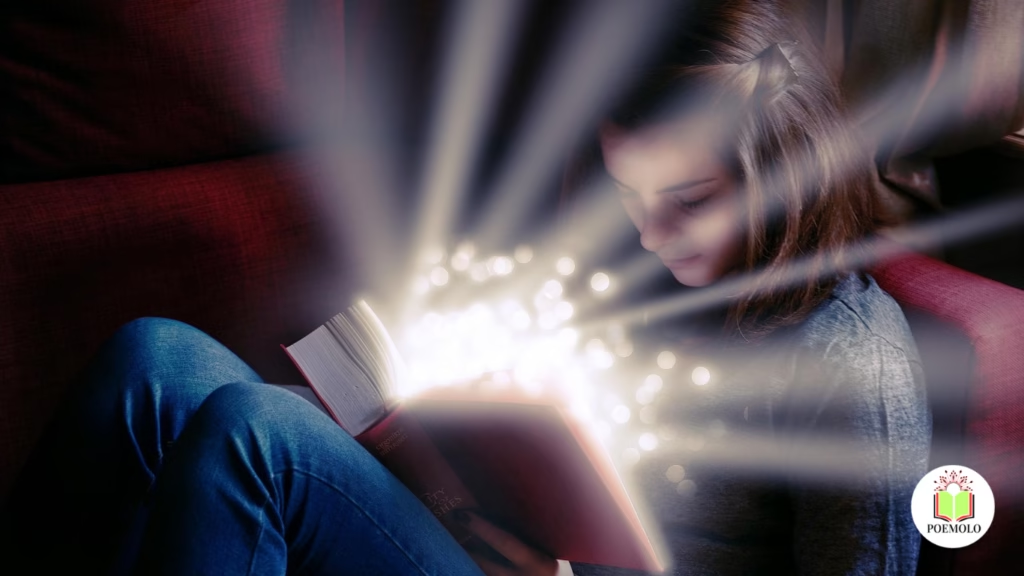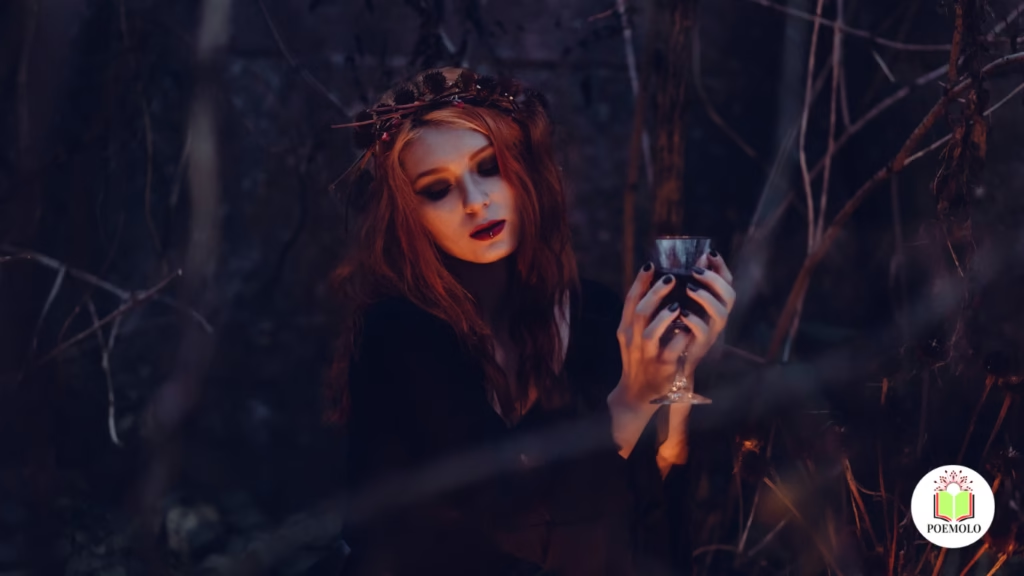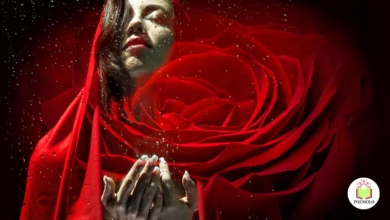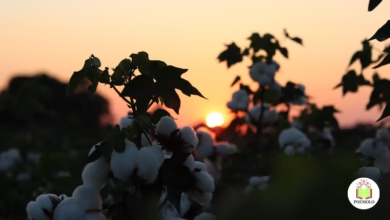A short poem with allusion combines brevity with deep cultural and literary importance. In the realm of poetry, brevity is often thought about an art form, and when it’s paired with the technique of allusion, a poet can convey complex emotions, themes, and ideas in a remarkably concise manner.
Allusions—subtle references to historical events, classical information, or famous works of literature—give a short poem an extra layer of depth, drawing the reader into a more profound, shared understanding.
The beauty of a short poem with allusion is that, in just a few lines, the poet can evoke the full weight of a well-known story, myth, or concept. Allusions make these poems feel timeless, linking them to broader traditions and stories.
This article will explore the power and appeal of allusions in short poems, offering insight into how allusion works, how it can enrich your own poetry, and how you can start writing your own poems with this technique.
What Is an Allusion in Poetry?

An allusion is a brief, indirect reference to a person, event, place, or work of art, often drawing on cultural, historical, or literary knowledge. In poetry, allusions allow the poet to hint at deeper meanings without fully explaining them, relying on the reader’s ability to recognize and interpret the reference.
For example, a poet might allude to Romeo and Juliet, invoking the idea of tragic love without explaining the full context of Shakespeare’s play. The reader, recognizing the reference, brings their own understanding of the tale to the poem, adding layers of meaning to the poem that go beyond its immediate words.
Related article: What Are Different Tones in Poems About Racial Identity?
Allusions in poetry can serve several functions, such as enhancing the emotional weight of the poem, creating connections between different themes or cultural ideas, or providing readers with additional context or subtext. The poet doesn’t have to explain the allusion in great detail; instead, the power of the allusion lies in its ability to resonate with those who recognize it.
In short poems, this technique is especially effective because it allows the poet to convey complex ideas in just a few lines. A poet can say more with less by referencing a widely known event, character, or story that carries its own set of meanings.
Poem: “Echoes of the Fall”
Beneath the tree, the apple lay,
The serpent coiled, in shadows’ sway.
A whisper passed, a world undone,
The garden lost, the fall begun.
Analysis Table:
| Element | Explanation |
| Title: “Echoes of the Fall” | The title hints at the fall of Adam and Eve in the Biblical story of Genesis. It suggests a reflective tone, examining the lasting consequences of the fall. |
| Line 1: “Beneath the tree, the apple lay” | Allusion to the Garden of Eden: The apple represents the forbidden fruit in the Garden of Eden. The tree is symbolic of knowledge and temptation. The line sets the stage for the Biblical fall. |
| Line 2: “The serpent coiled, in shadows’ sway” | Allusion to the serpent in the Garden of Eden: In the Bible, the serpent tempts Eve to eat the forbidden fruit. The image of the serpent coiling in shadows symbolizes deception and the beginning of sin. |
| Line 3: “A whisper passed, a world undone” | Allusion to temptation and sin: The “whisper” refers to the serpent’s temptation of Eve. The “world undone” reflects the consequences of sin, which led to humanity’s fall from grace. |
| Line 4: “The garden lost, the fall begun” | Allusion to the fall of Adam and Eve: This final line refers to the loss of paradise and the beginning of humanity’s suffering after Adam and Eve disobeyed God. The “fall” is the direct result of their actions. |
Overall Analysis:
This short poem with allusion refers directly to the Biblical story of Adam and Eve in the Garden of Eden, one of the most powerful and symbolic stories in Western literature. The apple and serpent are direct references to the original temptation and fall.
The poem conveys the gravity of the fall through simple imagery: the apple laying beneath the tree, the serpent in the shadows, and the eventual loss of paradise. The poem’s tone is somber, reflecting the irreversible consequences of disobedience, and highlights the universal theme of temptation leading to loss.
Related article: The Power of a Short Love Poem
The use of allusion in the poem adds a layer of depth, as readers familiar with the Biblical narrative can immediately connect the poem’s elements to the story. Through this reference, the poem evokes themes of innocence, temptation, disobedience, and the resulting suffering that follows. It speaks to the human condition and the consequences of choices made under temptation.
Why Use Allusions in a Short Poem?
The use of allusions in a short poem offers numerous advantages. For poets, especially those working with minimal word count, allusions provide a way to weave deeper significance into their work without over-explaining. Here are several reasons why allusions are so effective in short poems:
- Brevity with Depth: In a short poem, every word must count. Allusions allow poets to layer meaning quickly. Rather than fully describing an emotion, event, or idea, an allusion draws on existing knowledge, creating an immediate connection between the poem and the reader’s understanding. This conciseness allows the poet to achieve a profound emotional impact in just a few lines.
- Engagement of the Reader’s Imagination: Allusions stimulate the reader’s imagination by inviting them to recall or interpret the referenced material. This engagement fosters a more personal connection with the poem. Instead of simply telling the reader what to feel or think, the poet provides a starting point, allowing the reader to bring their own experience and interpretation into the poem.
- Layered Meanings: Because allusions often reference stories or themes with multiple interpretations, they provide a layer of depth to the poem. For example, an allusion to the myth of Orpheus could evoke a sense of loss, longing, and the impossibility of reversing fate, all without explicitly saying so.
- Cultural Resonance: Allusions often tap into shared cultural knowledge, enabling a poet to instantly communicate a concept without needing to fully explain it. A well-chosen allusion can bring the poem into a wider cultural conversation, connecting the poet’s work with other literary, historical, or mythical traditions.
- Emotional Impact: Allusions can evoke strong emotions by connecting a poem to familiar stories that have emotional weight. Referencing a tragic figure like Narcissus can amplify the themes of vanity and obsession, while alluding to the myth of Persephone can evoke feelings of loss, change, and the cyclical nature of life.
- Creating Universal Themes: Through allusions, a poet can touch on themes that transcend time and place. Allusions often reference universally known stories, making the poem relatable to readers from diverse backgrounds. This sense of universality gives short poems with allusions a timeless quality.
Types of Allusions in Poetry
When writing a short poem with allusion, poets can choose from various types of allusions. Below are some common types of allusions used in poetry:
- Literary Allusions: These allusions reference other works of literature. For example, a poet may allude to Homer’s Odyssey to invoke ideas of adventure and journey. By referencing well-known literary works, the poet connects the current poem to the broader literary tradition.
- Mythological Allusions: These allusions draw on myths and legends from various cultures, particularly Greek and Roman mythology. For example, an allusion to the tragic story of Icarus—who flew too close to the sun—may evoke themes of ambition and human folly.
- Historical Allusions: Allusions to historical figures or events are another effective tool in poetry. A reference to Cleopatra might invoke ideas of power and seduction, while alluding to a historical event like the fall of the Berlin Wall could carry themes of division and unity.
- Biblical Allusions: References to stories or figures from the Bible are common in many works of literature and poetry. For instance, alluding to Adam and Eve can invoke themes of innocence, temptation, and the loss of paradise.
- Pop Culture Allusions: In contemporary poetry, allusions to pop culture figures or modern events are also quite common. A reference to Shakespeare can connect a poem to classic literary themes of love and tragedy, while a reference to a rock song might evoke nostalgia or rebellion.
Crafting a Short Poem with Allusion

Creating a short poem with allusion requires careful consideration. The poet must select the right allusion, incorporate it seamlessly into the poem, and ensure it enhances the overall meaning. Here are a few steps to help you craft your own short poems with allusions:
- Select Your Allusion: The first step is to choose a suitable allusion. This could be a reference to a work of literature, a historical event, a mythological figure, or even a pop culture phenomenon. The key is to select an allusion that fits the theme or message you want to convey in your poem.
For example, if your poem explores the theme of ambition, you might reference Macbeth’s tragic desire for power. If your poem is about lost love, you could allude to Romeo and Juliet, or even the myth of Pyramus and Thisbe.
- Keep It Subtle: Allusions are often most effective when they are subtle. Rather than fully explaining the reference, use it to hint at a deeper meaning. A well-placed allusion invites the reader to explore the connection on their own, sparking their curiosity and engagement.
- Align the Tone: Make sure the allusion aligns with the tone of your poem. If your poem is lighthearted, a reference to a humorous myth or character might work best. For a more serious poem, choose an allusion that carries emotional weight or gravity.
- Use Imagery to Enhance the Allusion: Pair your allusion with vivid imagery that ties into the reference. For example, if your poem alludes to Icarus’s flight, you might use imagery of soaring heights, the sun’s intense light, or melting wax to evoke the myth’s themes.
- Avoid Overuse: While allusions are powerful, they should not dominate the poem. The poem should focus on the emotions or ideas you want to express, with the allusion serving to enhance those themes. Too many allusions can clutter the poem and detract from its impact.
Examples of Short Poems with Allusions
Here are several examples of short poems with allusions to showcase how they work:
“The Fall of Icarus”
The sun calls me upward,
Wings bound by wax and desire,
I rise, I soar, then fall.
Allusion: The myth of Icarus, who flew too close to the sun and fell, represents ambition and the inevitable downfall that often accompanies it.
“Persephone’s Return”
Beneath the earth, she sleeps,
Flowers grow where shadows creep,
From darkness to light, her heart weeps.
Allusion: The myth of Persephone and her return from the underworld represents themes of loss, renewal, and cyclical change.
“Romeo’s Last Letter”
Underneath the moonlit sky,
A letter burns, a love gone dry,
Two hearts that never said goodbye.
Allusion: Reference to Romeo and Juliet‘s tragic love, where the allusion to “two hearts that never said goodbye” amplifies the theme of love and loss.
Tips for Using Allusions in Poetry
Here are some additional tips for using allusions effectively in your poems:
- Do Your Research: Before using an allusion, make sure you are familiar with the full context of the reference. This knowledge will help you use the allusion in a way that enhances your poem.
- Consider Your Audience: Not all readers will be familiar with every allusion. If you’re using a reference that might not be widely known, consider the impact it will have on your readers. You can always choose to explain the reference subtly within the poem or avoid overly obscure references.
- Play with Multiple Layers: Experiment with multiple allusions in one poem. Layering different references can create a rich tapestry of meanings and enhance the overall impact of your poem.
- Use Allusions to Evoke Emotion: Allusions can evoke strong emotions in readers, especially when they connect to timeless stories or figures. Use this emotional resonance to your advantage when crafting poems that need to stir deep feelings.
Conclusion
Writing a short poem with allusion is a powerful way to convey complex emotions and ideas concisely. By using allusions, poets can tap into shared cultural knowledge, bringing added depth and meaning to their work without lengthy explanations.
Whether drawing on classical mythology, historical events, or literary masterpieces, allusions enable poets to say more with fewer words, enriching the poem for both the writer and the reader.
Now that you understand the significance of allusions and how to incorporate them into your own poems, you can begin to experiment with this technique. Whether you’re writing about love, loss, ambition, or change, an allusion can add layers of depth to your short poems, making them resonate on a deeper level with your audience.





